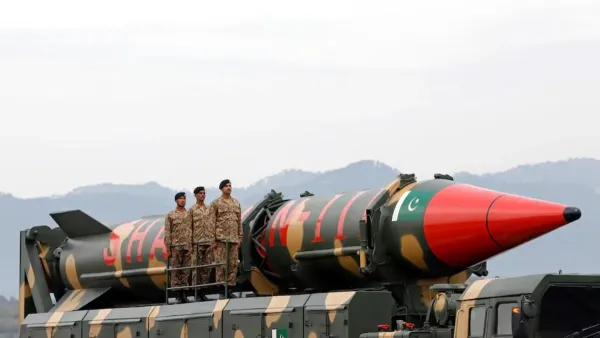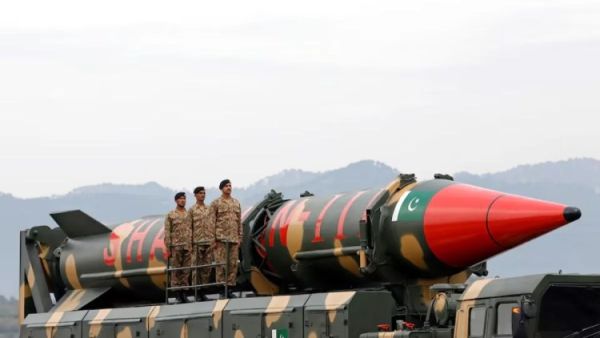
At the break of morning on Saturday, India conducted pinpoint attacks against at least four airfields in Pakistan in a significant escalation. Following a series of drone attacks and missile launches by Pakistan on Indian military and civilian targets, the retaliatory strikes were launched.

India’s Barak-8 air defence system successfully intercepted Pakistan’s Fatah-II hypersonic ballistic missile over Sirsa, Haryana. As Pakistan launched its offensive operation “Operation Bunyan ul Marsoos”, the missile—which was believed to be aimed towards the National Capital Region—was a significant escalation.
26 locations along the International Border and Line of Control (LoC), including Baramulla, Srinagar, Avantipora, Nagrota, Jammu, Ferozpur, Pathankot, Fazilka, Lalgarh Jatta, Jaisalmer, Barmer, Bhuj, Kuarbet, and Lakhi Nala, were reported to have drone activity, according to the Ministry of Defence. A local family member was hurt when an armed drone targeted a Ferozpur home neighbourhood. The wounded person is receiving care, and the area has been decontaminated,” the ministry said. India also stopped a huge Pakistani drone and missile strike on many Indian military installations on the evening of May 7–8. Indian forces are accused of destroying a Lahore air defence system during the operation.
Pakistan’s Hypersonic Battlefield Weapon, the Fatah-II Missile
Pakistan developed the Fatah-II, a next-generation guided artillery rocket weapon with an estimated 400-kilometre range. It is an enhanced version of the Fatah-I with more destructive power, accuracy, and range. The Fatah-II is often compared to contemporary combat missile systems like China’s PHL series and the US GMLRS, which is fired by HIMARS. It can carry both conventional and tactical nuclear weapons and is designed for quick, accurate attacks. Since the missile is hypersonic—that is, capable of travelling faster than Mach 5—it is very challenging to intercept without sophisticated air defence systems like India’s Barak-8.
Essential Elements of Fatah-II:
• Payload: Able to launch conventional or low-yield tactical nuclear bombs; • Range: More than 400 km; • Speed: Hypersonic (Mach 5 or higher);
• Goal: Using battlefields to attack military installations, vital infrastructure, or large force concentrations
• Accuracy: Outfitted with cutting-edge navigation technologies for accurate aiming
Because the Fatah-II is designed for tactical battlefield deployment rather than strategic missiles like the Shaheen-III or Ghauri-II, Pakistan may threaten military targets and infrastructure without necessarily going over the nuclear escalation threshold. Its placement close to the India-Pakistan border and its purported launch towards Delhi represent a major escalation and have led Indian defence officials to urgently demand for strategic readiness.
The Missile Arsenal of Pakistan
• Fatah-II: a hypersonic ballistic missile with a range of over 400 km that is capable of carrying tactical nuclear weapons.
• Shaheen-III: With a range of 2,750 km, this missile can hit targets deep inside India and beyond.
• Ghauri-II: a North Korean Nodong missile derivative with a range of more than 2,000 km.
• Babur-3: 450-kilometer-range cruise missile fired from a submarine.
• Nasr (Hatf-IX): A tactical missile with a 70 km range that can carry a nuclear weapon.
• The nuclear-capable SRBM Ghaznavi (Hatf-III) has a range of 290–320 km.
* Harba & Zarb: 280–450 km range cruise missiles and coastal defence missiles; * Abdali (Hatf-II): 200–300 km range SRBM with inertial guidance.
-
No need to panic, J-K has adequate supply of essential commodities: Govt

-
Video: Pakistan should be disarmed of its nukes, says Owaisi

-
Shahid Kapoor is now one of top paid actors on OTT, check his fees

-
Moody's Issues Negative Outlook For IndusInd Bank As Concerns Over Stability And Governance Rise

-
Indian Travel Firms Suspend Bookings To Turkey And Azerbaijan Amid Indo-Pak Tensions
